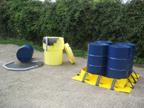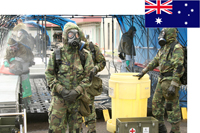华盛顿特区,2024 年 7 月 11 日——美国化学安全与危害调查委员会 (CSB) 发布了一段新的安全视频,介绍其对2021 年 7 月 27 日德克萨斯州拉波特利安德巴塞尔拉波特综合设施发生致命乙酸泄漏事件的调查情况 ,该事件导致两名合同工死亡。当三名合同工无意中拆除旋塞阀的关键部件时,约 164,000 磅高腐蚀性乙酸混合物从设备中喷出。三名工人都被乙酸混合物喷到。其中两名工人因伤势过重死亡。CSB 的新安全视频名为“注定失败:利安德巴塞尔公司的化学品泄漏”,其中包括导致此次事故的动画,以及 CSB 董事会成员 Sylvia Johnson 博士和 CSB 调查员 Benjamin Schrader 的评论。CSB 于 2023 年 5 月 25 日发布了关于致命利安德巴塞尔事件的最终调查报告。CSB 的调查发现,事故发生时,Turn2 Specialties Companies 的三名承包商试图隔离位于泄漏管道和醋酸反应器之间的管道部分。为此,他们决定通过拆除阀门的执行器将旋塞阀锁定在关闭位置。然而,利安德巴塞尔没有详细说明如何拆卸执行器的程序,利安德巴塞尔和 Turn2 都没有培训 Turn2 人员如何拆卸执行器。相反,承包商无意中拆除了固定阀盖的压力保持紧固件,这些紧固件不应该被拆除以卸载执行器。受损的阀门失灵,三名 Turn2 工人都被醋酸混合物喷到。 当哥伦比亚广播公司 (CBS) 发布最终调查报告时,CSB 主席史蒂夫·欧文斯 (Steve Owens) 指出“全国各地都发生过类似的事件,涉及在拆除连接设备时无意中拆开旋塞阀”,并敦促采取行动解决这一问题。安全视频介绍了 CSB 最终报告中指出的导致事故发生的两个关键安全问题:(1) 阀门设计是否能防止人为错误;(2) 为工人提供安全工作的条件、程序和培训。视频还重点介绍了 CSB 向美国机械工程师学会、美国石油学会和利安德巴塞尔提出的安全建议。在视频中,董事会成员约翰逊表示:“正如这起悲剧事件向我们展示的那样,如果操作不当,即使是一项简单的任务也可能造成致命后果。现在是时候改进旋塞阀的设计并采取其他保护措施了,例如确保所有现有旋塞阀压力保持部件上都有清晰的标记,工人在进行维护之前要接受适当的培训。这些重要步骤对于预防伤害和挽救生命大有裨益。”Washington D.C., July 11, 2024 - the U.S. Chemical Safety and Hazard Investigation Board (CSB) released a new safety video on its investigation into the fatal release of acetic acid at the LyondellBasell La Porte Complex in La Porte, Texas, on July 27, 2021, that killed two contract workers. Approximately 164,000 pounds of a highly corrosive acetic acid mixture erupted from equipment when three contract workers inadvertently removed critical components of a plug valve. All three workers were sprayed with the acetic acid mixture. Two of the workers died from their injuries.The CSB's new safety video, called “Designed to Fail: Chemical Release at LyondellBasell,” includes an animation of the events leading to the incident, as well as commentary from CSB Board Member Dr. Sylvia Johnson and CSB Investigator Benjamin Schrader.The CSB released its final investigation report on the fatal LyondellBasell incident on May 25, 2023. The CSB’s investigation found that the incident occurred when three contractors from Turn2 Specialties Companies attempted to isolate a pipe section located between a leaking pipe and an acetic acid reactor. To do so, they decided to lock a plug valve in the closed position by removing the valve’s actuator. However, LyondellBasell did not have a procedure detailing how to remove the actuator, and neither LyondellBasell nor Turn2 trained the Turn2 personnel on how to remove the actuator. Instead, the contractors inadvertently removed pressure-retaining fasteners that were holding the valve cover in place and should not have been removed to uninstall the actuator. The compromised valve failed, and all three Turn2 workers were sprayed by the acetic acid mixture. When the CBS’s final investigation report was issued, CSB Chairperson Steve Owens had noted that “[t]here have been similar incidents around the country involving plug valves being inadvertently taken apart when removing connected equipment” and urged that action be taken to address this issue.The safety video addresses the two key safety issues identified in the CSB’s final report that contributed to the incident: (1) valve design to prevent human error and (2) providing workers with conditions, procedures, and training to safely conduct work. The video also highlights safety recommendations made by the CSB to the American Society of Mechanical Engineers, the American Petroleum Institute, and LyondellBasell.In the video Board Member Johnson states: “As this tragic incident has shown us, even a simple task can turn deadly if it is not properly performed. It is time to improve the design of plug valves and take other protective actions, such as ensuring that clear markings are visible on all existing plug valve pressure-retaining components, and workers are properly trained before conducting maintenance. Vital steps like these can go a long way in injury prevention and help save lives.”The CSB is an independent federal agency charged with investigating incidents and hazards that result, or may result, in the catastrophic release of extremely hazardous substances. The agency’s core mission activities include conducting incident investigations; formulating preventive or mitigative recommendations based on investigation findings and advocating for their implementation; issuing reports containing the findings, conclusions, and recommendations arising from incident investigations; and conducting studies on chemical hazards.



